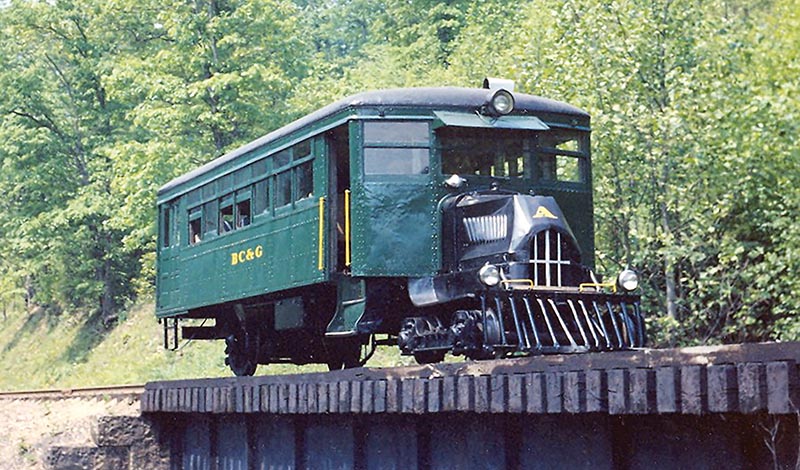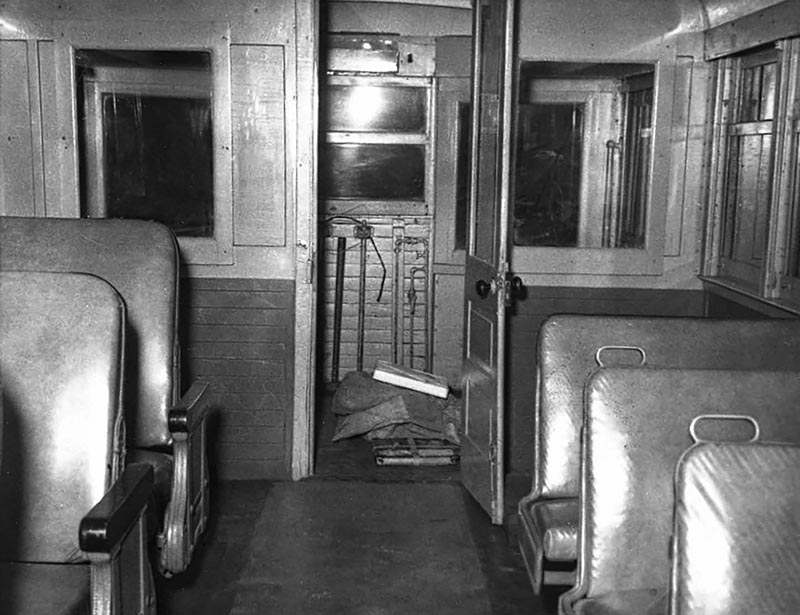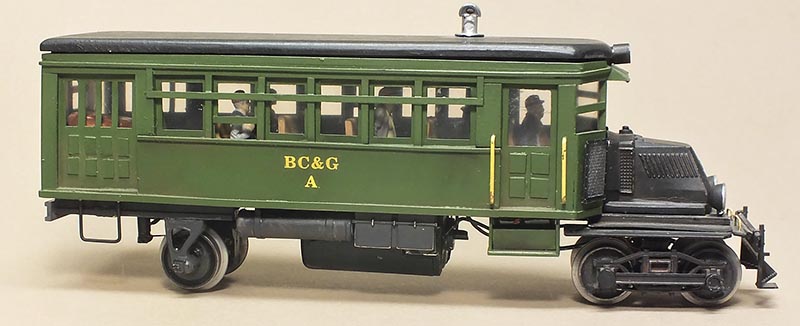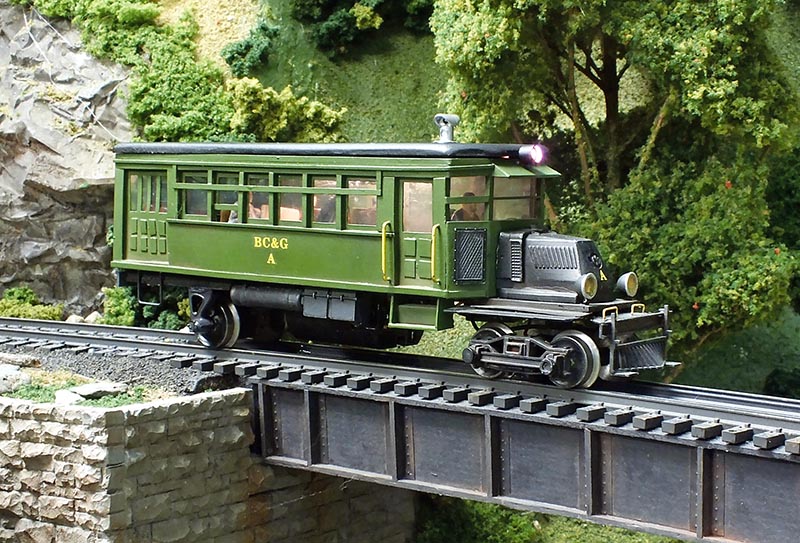 By Brooks Stover, MMR/photos by the author except as noted
By Brooks Stover, MMR/photos by the author except as noted
I’m 74 years young and I’ve been modeling the Buffalo Creek & Gauley (BC&G) in S scale for four decades. Over the years I’ve shared quite a bit of my BC&G modeling through the pages of Narrow Gauge & Short Line GAZETTE and other modeling publications. I enjoy putting together the stories of how I research and create models of the rolling stock and structures of the BC&G, a fascinating, but rarely modeled West Virginia short line. If nothing else, writing articles for publication is a way to preserve the BC&G story for future modelers.
I was recently going through some of my earlier published articles, and I came across the July/August 1995 issue of S Gaugian. S Gaugian, which ceased publication in 2019, was published by Don Heimburger and contained S scale material exclusively. On the cover of that issue was a color photo of my model of BC&G’s Mack railbus, known on the BC&G as Motor A. In looking back over the article, I realized that my model, now itself over 25 years old, has a fascinating history of its own. In this article I tell the story of this little scratchbuilt model and how it evolved, and I describe the prototype that inspired it.

ABOVE: This image from June 1963 shows Motor A as it appeared in its final years on the BC&G. The modifications to the bulldog hood were required to accommodate a conventional front mounted radiator installed when the Mack engine was replaced with a 6-cylinder Chevy engine from a pickup truck.
Discovering The BC&G
I began looking for a prototype to model in the early 1980s. I knew I wanted to model something a little different. I also knew I wanted to stay with S scale as I had S toy trains as a kid and liked their size, and the fact that it was a less-modeled scale. It quickly became clear that modeling in S meant I was going to have to scratchbuild a fair amount, a challenge I was willing to accept. All these years later, I’m glad I’ve stayed with S.
When I came across photographs and information about the Buffalo Creek & Gauley, and its sister logging operation, I was hooked. The line had three chunky Consolidations, a couple old coaches and an ex-Baltimore & Ohio caboose — perfect subjects for a modest-sized S layout. But the hook was set when I discovered that the BC&G also rostered a Mack AC railbus!

ABOVE: This image of the interior of Motor A on the BC&G was among the photos obtained from Richard Manning, BC&G General Superintendent.
The Prototype
There is a great deal of information about BC&G’s railbus, partly because it still exists, but more about that later. The bus is well documented in The History of Mack Rail Motor Cars and Locomotives published in 1959 by the Lehigh Valley Chapter of the NRHS. The chassis was built by Mack, the truck people, and the body was built by Brill. The bus was constructed as c/n 6005 and became No. 20 for the Lewisburg, Milton & Watsonville Passenger Railway (LM&WP), a Pennsylvania trolley line that bought the railbus new. In 1928, it became PRR No. 4738 and in 1931 it was sold to the Artemus-Jellico, a Kentucky short line, before going to the BC&G in 1941.
Mack AC models had a 64 hp, 4-cylinder gasoline engine. As delivered, the ACs had the distinctive bulldog hood used on Mack trucks of the time. Model ACs had 4 forward and 4 reverse gears and were capable of about 30 mph in either direction. Couplers were an option, but Mack discouraged pulling trailers with their busses. The BC&G’s bus did not have couplers on either end. Only 12 Model AC busses were built, of which three went to Cuba.

ABOVE: The side view shows how much the clear glazing and interior detail improve the look of the bus and draw the viewer in for a peek inside. The author is anticipating many more years of service out of this now 25-year-old model.
On The BC&G
On the BC&G, the railbus became known as Motor A. This nomenclature apparently did not have anything to do with its Mack AC designation, but rather stemmed from the fact that the BC&G acquired a second, smaller railbus made by the FWD Company, making the Mack AC the first, hence the “A” designation. The BC&G’s FWD Co. railbus was designated Motor B.
Motor A was used in scheduled passenger service on the BC&G for many years. It made two round trips a day along the full 18.6-mile length of the railroad between Dundon and Widen. The bus had a small baggage compartment at the rear, and it stopped regularly at the dairy in Cressmont, about halfway along the line, to pick up bottled milk which was distributed to the several small communities owned by the BC&G’s parent company, the Elk River Coal & Lumber Co. There are photos of the bus at a small, corrugated metal shed at Widen used to store mail, so it is likely that it also served as a mail truck. Besides milk, other light freight was shipped in the baggage compartment. Passenger service ran as late as 1959. After that, the bus was used during the occasional railfan trip.
When it arrived on the BC&G, Motor A had the original Mack engine and bulldog hood and the Mack cowl-mounted radiators. The reconfigura-tion of the distinctive Mack hood into a decidedly less elegant form was done by the BC&G crews when the original Mack engine was replaced with a “modern” in-line 6-cylinder engine from a Chevrolet pickup truck…



